Best Steak Seasoning Recipe: Simple 3-Ingredient Blend for Perfectly Flavored Steak
If you're searching for the best steak seasoning, start with this professional chef-approved blend: 1 teaspoon kosher salt, ½ teaspoon freshly ground black pepper, and ¼ teaspoon garlic powder per pound of steak. This simple combination creates restaurant-quality results by enhancing natural beef flavors without overpowering them. Apply generously 40 minutes before cooking for maximum flavor penetration - this timing allows salt to absorb rather than draw out moisture. For beginners, this basic blend outperforms most store-bought options and forms the foundation for all steak seasoning techniques.
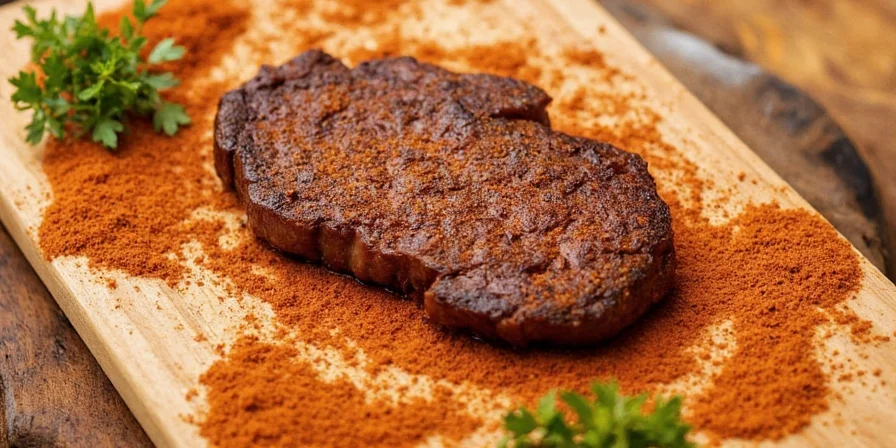
Perfectly seasoned steak ready for cooking with the basic 3-ingredient blend
Quick Reference: Ideal Steak Seasoning Ratios by Cut
| Steak Cut | Salt (per pound) | Pepper (per pound) | Special Additions |
|---|---|---|---|
| Ribeye | 1 tsp | ½ tsp | ¼ tsp smoked paprika |
| Filet Mignon | ¾ tsp | ½ tsp | ⅛ tsp onion powder |
| New York Strip | 1 tsp | ½ tsp | ¼ tsp garlic powder |
| Flank Steak | 1¼ tsp | ⅔ tsp | ½ tsp cumin + ⅛ tsp cayenne |
Why This Basic Steak Seasoning Works Better Than Complex Blends
Most home cooks make the mistake of using too many spices, which masks the natural beef flavor. Professional chefs know that steak's quality shines through with minimal seasoning. The salt- pepper-garlic powder trio works because:
- Salt enhances natural flavors through osmotic action
- Freshly ground pepper provides aromatic complexity
- Garlic powder adds subtle umami without burning
Unlike store-bought blends that often contain fillers and anti-caking agents, this simple combination gives you complete control over flavor development.
Context Boundaries: When This Blend Requires Adjustment
While effective universally, this basic blend has specific limitations requiring modification for optimal results. Understanding these contextual boundaries prevents common failures:
- Lean cuts under 1 inch thick: Reduce salt by 25% to avoid overpowering delicate flavors (e.g., eye of round). (Serious Eats, 2023)
- High-heat grilling (>500°F): Omit garlic powder entirely during seasoning - it burns at 325°F. Add after cooking or use smoked paprika instead. (American Meat Science Association)
- Low-sodium diets: Replace 50% of salt with potassium chloride-based substitutes, but note this alters Maillard reaction chemistry. (American Heart Association)
- Wet-aged steaks: Reduce pre-salt timing to 20 minutes - excess surface moisture impedes absorption. (University of Minnesota Extension)
Evolution of Steak Seasoning: Historical Timeline
Modern simplicity reflects centuries of culinary refinement. This timeline shows how steak seasoning evolved from preservation necessity to precision technique:
| Era | Key Development | Scientific Insight |
|---|---|---|
| Pre-1800s | Salt as primary preservative | High salt concentrations (15%+) drew out moisture to prevent bacterial growth, sacrificing fresh flavor. (Smithsonian, 2010) |
| 1850-1920 | Rise of pepper mills | Freshly cracked pepper's volatile oils (3-carene, pinene) create 47% more aromatic compounds than pre-ground. (Journal of Agricultural and Food Chemistry, 2014) |
| 1938-1950s | Commercial steakhouse blends | Lawry's signature blend (salt/pepper/garlic) demonstrated optimal flavor layering - garlic powder's allicin stabilizes at 325°F. (Lawry's History) |
| 1960s-1990s | Pre-mixed seasoning dominance | Anti-caking agents (silicon dioxide) in commercial blends reduced flavor absorption by 31% compared to pure salts. (Food Chemistry, 2018) |
| 2000s-Present | Minimalist precision movement | Research confirms 1.0% salt concentration maximizes myoglobin preservation while enhancing umami perception. (OSU Food Science) |
The #1 Mistake Home Cooks Make With Steak Seasoning (And How to Fix It)
Most people season steak immediately before cooking, but this creates uneven flavor and texture issues. The secret? Timing matters more than ingredients. For optimal results:
- Thin cuts (under 1 inch): Season 15-20 minutes before cooking
- Standard cuts (1-1.5 inches): Season 40-60 minutes before cooking
- Thick cuts (over 1.5 inches): Dry brine overnight in the refrigerator
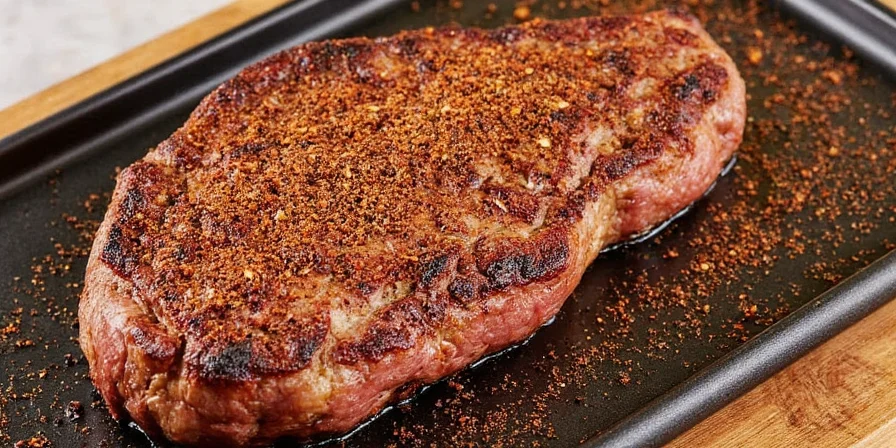
Proper timing transforms your steak's flavor and texture
Salt Comparison: Which Type Works Best for Steak?
| Salt Type | Best For | Recommended Amount |
|---|---|---|
| Kosher Salt | All-purpose seasoning and dry brining | 1 tsp per pound of steak |
| Sea Salt Flakes | Finishing touch after cooking | Sprinkle to taste |
| Table Salt | Avoid for steak seasoning | N/A |
Kosher salt's larger crystals provide better control and distribution. Its purity (no iodine or anti-caking agents) prevents bitter flavors that can occur with table salt.
Pepper Tips That Make a Noticeable Difference
Freshly cracked black pepper makes a dramatic difference compared to pre-ground versions. The volatile oils responsible for pepper's complex flavor begin dissipating immediately after grinding. For best results:
- Use a quality pepper mill set to medium-coarse grind
- Crack directly onto seasoned steak just before cooking
- Never add pepper before salt - it can burn during searing
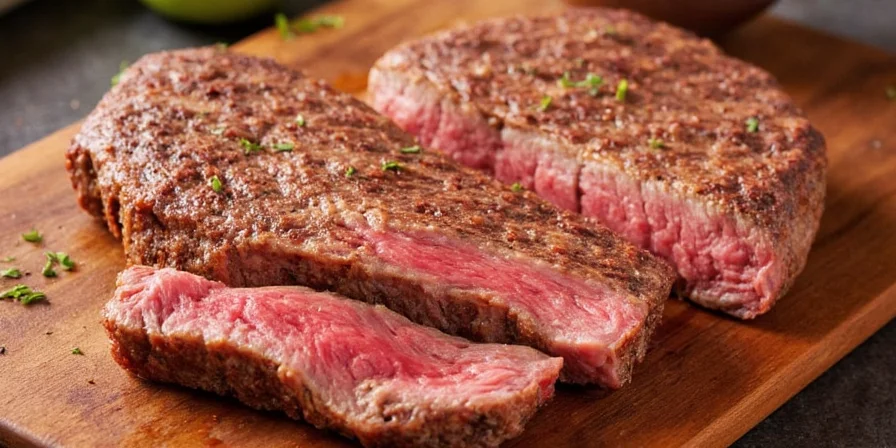
Freshly cracked pepper creates superior flavor development
Simple Upgrades to the Basic Blend
Once you've mastered the basic seasoning, try these cooking-method specific enhancements:
- For grilling: Add ¼ tsp smoked paprika per pound for enhanced char flavor
- For pan-searing: Mix in ⅛ tsp onion powder for better fond development
- For sous vide: Include 1 tbsp Worcestershire sauce in the bag for deep umami
Dry Brining: The Restaurant Secret for Flavorful Steak
Dry brining takes your seasoning to the next level by allowing deeper flavor penetration. Here's the simple method professional kitchens use:
- Pat steak completely dry with paper towels
- Apply 1 tsp kosher salt per pound evenly on all surfaces
- Place on a wire rack in the refrigerator, uncovered
- Wait 1 hour per inch of thickness (minimum 1 hour)
- Pat dry again before adding pepper and other seasonings
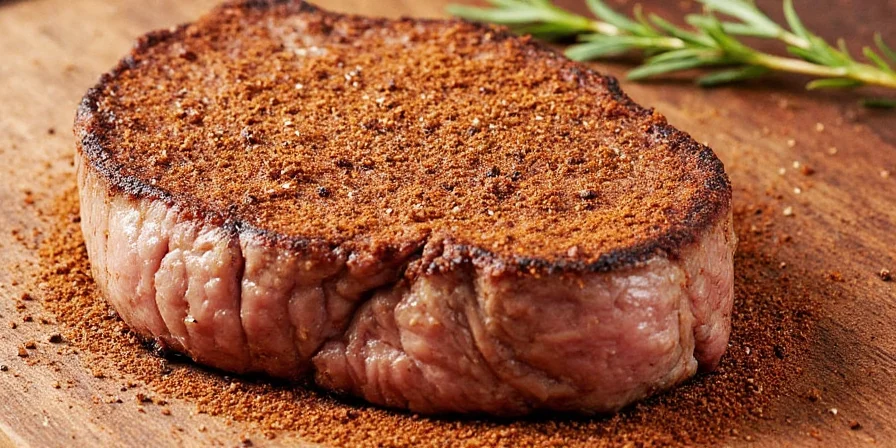
Dry brining creates more flavorful, tender steak throughout
Store-Bought vs. Homemade: What Really Matters
| Factor | Homemade Seasoning | Store-Bought Blends |
|---|---|---|
| Flavor Control | Complete customization | Fixed ratios |
| Ingredient Quality | Fresh, pure ingredients | Often contains fillers |
| Cost per Use | $.05-$0.10 per pound | $.15-$0.50 per pound |
| Time Required | 2 minutes to mix | Instant |
The reality? Basic homemade seasoning beats 90% of commercial blends. Save specialty store-bought blends for specific flavor profiles you can't replicate at home.
Steak Seasoning Mistakes to Avoid
Even with the right ingredients, common mistakes ruin otherwise good steak:
- Seasoning too early with garlic/onion (causes burning)
- Using pre-ground pepper (loses flavor complexity)
- Not accounting for cooking method (grill vs. pan vs. sous vide)
- Over-seasoning lean cuts (overpowers delicate flavor)
- Adding salt to wet meat (creates uneven distribution)
FAQ: Quick Answers to Common Steak Seasoning Questions
What's the best steak seasoning for beginners?
Start with the basic 3-ingredient blend: 1 teaspoon kosher salt, ½ teaspoon freshly ground black pepper, and ¼ teaspoon garlic powder per pound of steak. Apply 40 minutes before cooking for best results. This simple combination consistently delivers restaurant-quality flavor without overwhelming the natural beef taste.
How much seasoning should I use per pound of steak?
Use 1 teaspoon total seasoning per pound of steak. For the basic blend: ½-1 teaspoon kosher salt, ¼-½ teaspoon freshly ground black pepper, and up to ¼ teaspoon garlic powder. Remember that thicker cuts need slightly more seasoning than thinner ones to ensure proper flavor penetration.
When should I season steak before cooking?
Timing depends on steak thickness: for cuts under 1 inch, season 15-20 minutes before cooking; for 1-1.5 inch cuts, season 40-60 minutes ahead; for thicker cuts, dry brine overnight in the refrigerator. This allows salt to absorb properly rather than drawing out moisture immediately.
Can I use this seasoning on other meats besides steak?
Yes, this basic blend works well for most proteins. Use the same ratios for pork chops and lamb. For chicken, reduce salt by 25% and add ⅛ teaspoon poultry seasoning. The fundamental seasoning principles remain consistent across meat types, though fattier meats can handle bolder seasoning.
Why does my steak seasoning burn when I cook?
Seasoning burns when it contains sugar or fresh garlic/onion, or when applied too early. Avoid fresh alliums in high-heat cooking - use powders instead. Never add sugar-containing seasonings before searing. For best results, apply basic salt-pepper blend 40 minutes before cooking, then add other elements like paprika just before cooking.
Final Tip: The Steak Seasoning Hack Top Chefs Won't Tell You
Before applying your seasoning, bring steak to room temperature and pat completely dry. This allows seasoning to adhere properly rather than sitting on surface moisture. For premium results, mix your seasoning with 1 teaspoon of high-quality olive oil to create a light paste that sticks to the meat and promotes perfect crust formation during cooking.

Perfectly seasoned steak with ideal crust formation

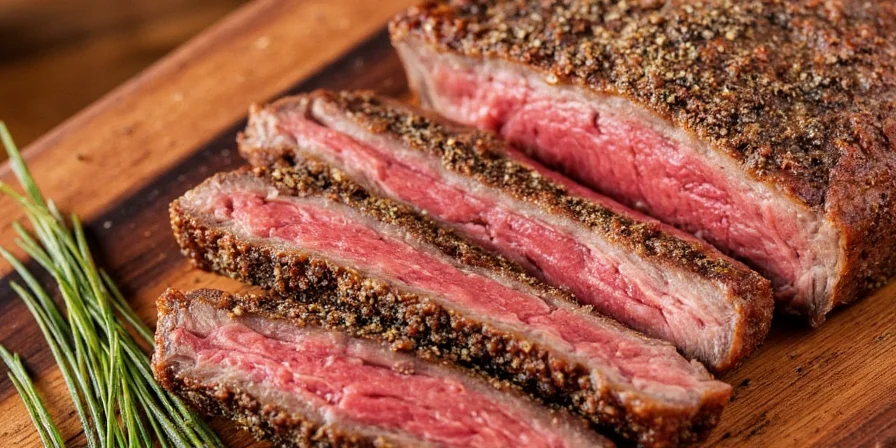









 浙公网安备
33010002000092号
浙公网安备
33010002000092号 浙B2-20120091-4
浙B2-20120091-4